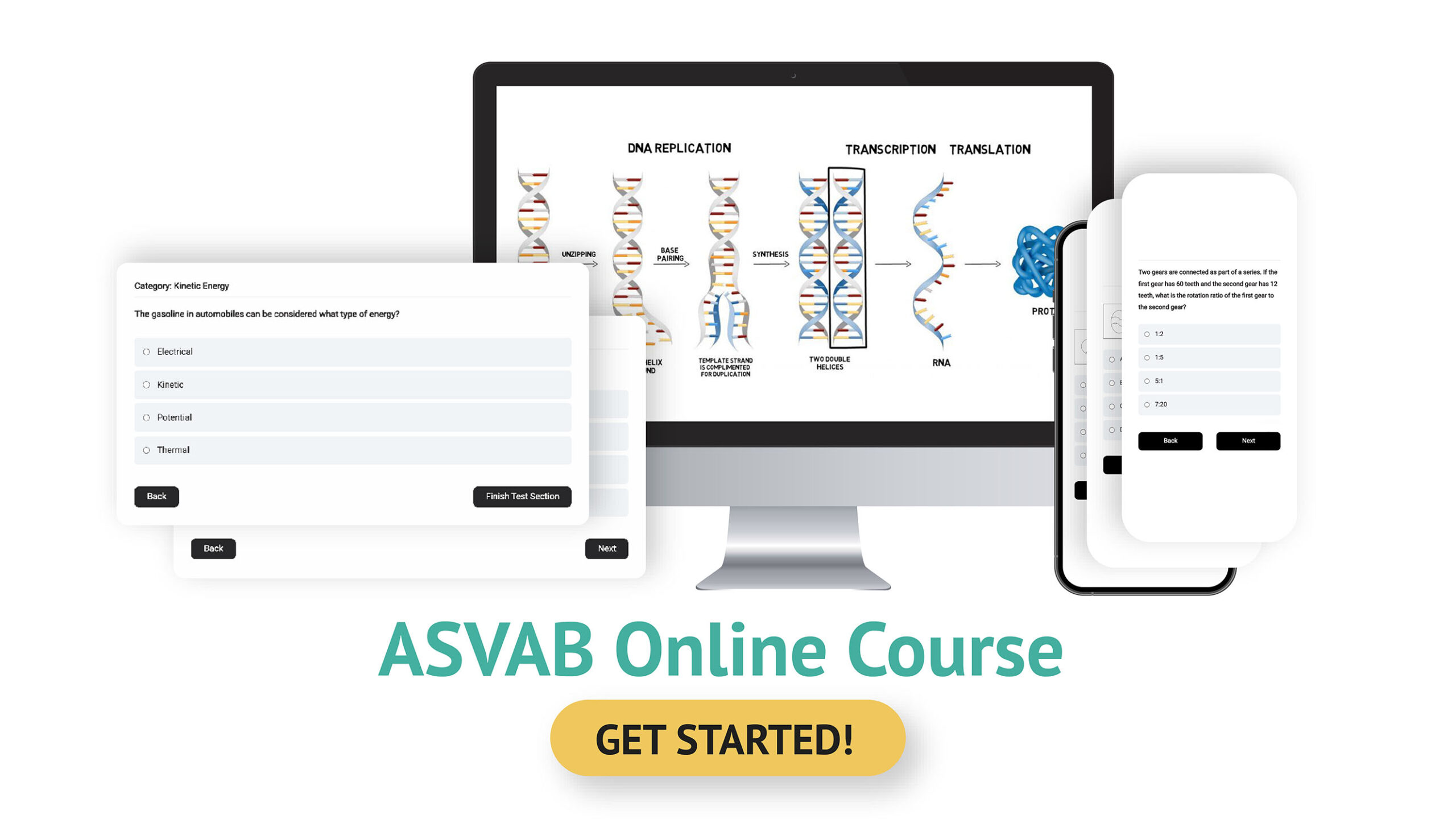Mechanical Comprehension - ASVAB Practice Test
For better scores on the ASVAB, you should understand what is tested on each subtest of the ASVAB and know how each subtest is structured.
One of the best ways to know is to know for sure is to take a free mechanical comprehension practice test like the one offered in the Smart Edition Academy ASVAB course which you can take here.
If you want more practice tests and all the resources to PASS the ASVAB check out the Online Course
If you want the best chance at passing the ASVAB then the Smart Edition ASVAB course will provide all the material and resources you need to succeed on the test.
What is the ASVAB mechanical test?
The ASVAB mechanical comprehension test is one of the 10 subtests that make up the ASVAB. This subtest measures your ability to understand and apply basic mechanical principles. The questions on this subtest assess your knowledge of simple machines, power and energy, pulleys and levers, gears, properties of matter, fluid mechanics, and thermodynamics.
If you’re planning on enlisting in the military or pursuing a career in a field that requires a strong understanding of mechanical principles, then you need to do well on this subtest.
How can I study for mechanical comprehension on the ASVAB?
How to study for the mechanical comprehension section of the ASVAB will vary from person to person based on their existing understanding of mechanics. The baseline for gauging where you are in understanding mechanics can begin by taking a practice test. By taking an ASVAB practice test, you can review the diagnostic results to determine what areas within mechanics need further studying.
As a quick overview of what information you should be prepared to know and study for this section includes:
- Basic definition, correlational relationships between motion and objects, and formulas for mechanics such as mass, force, pressure, gravity, power, load PSI, resistance, torque, and tension.
- What are simple mechanics, and what are the six types of simple mechanics? For example, understanding the differences between a lever and an inclined plane.
- What are complex mechanics?
- The formulas and mathematical equations required to determine the mechanical advantage.
What mechanical comprehension will I need for the ASVAB?
To do well on this section of the test. You should have a fundamental understanding of the following concepts:
- Mechanics and motions of material objects.
- Forces and the relationship it has to objects and matter.
- Simple and complex machines and the various types of simple and complex machines.
- The correlation between the effort required to move a load.
What is the average mechanical score on the ASVAB?
The ASVAB uses a scoring system of 0-100 for each test subsection. The average score in the mechanical comprehension section is 50. A score of 60 or higher is considered above average.
What is the best practice test for the ASVAB?
What is the best way to prepare for the ASVAB paragraph comprehension portion?
The best way to prepare for this section of the ASVAB is to practice doing paragraph comprehension exercises. Since it is impossible to know what passages will be presented to you on test day, it’s important to practice reading short and long passages and answering questions about them.
For example, by actively reading more each day, you can evaluate what you have read yourself by summarizing the information for your understanding or teaching the material to someone else.
Another example of active practice would be to take ASVAB paragraph comprehension practice tests regularly. These practice tests will be timed and provide similar passages and question formats that you will encounter on the test. You’ll want to work on getting faster in this section so you don’t end up with unanswered questions because you ran out of time.
The ASVAB has several sections that you should become familiar with and study, sections like Paragraph Comprehension can be challenging so using free practice tests, online courses, and study guides can help you prepare to score high on that section.



